Abstract
Hartley, B. P. R., Howell, R. W., Sinclair, A., and Slattery, D. A. D. (1973).British Journal of Industrial Medicine,30, 271-275. Subject variability in short-term audiometric recording. The reliability of a single audiogram at one examination has not been established under industrial conditions. It has previously been suggested that when audiograms are taken they should be performed at least three times, preferably not at one sitting, and that the mean level at each frequency should be taken as the definitive value of hearing level.
This study seeks to compare the reliability of three audiograms taken at a single session, but with a break between tests, with three audiograms taken at roughly weekly intervals. One hundred and thirty-two apprentices (average age 16 years) without occupational noise exposure were examined with a Peters audiometer, using one operator only at each of the two works involved. At a third works 45 men (average age 36 years), mostly with occupational noise exposure, had three audiograms taken within an hour using a self-recording audiometer. Not only did the mean of three audiograms from a single session show no practical difference when compared with the mean of three readings taken on separate occasions roughly a week apart, but the second audiogram of the first three was found to be generally representative of the mean of these three. In only 4 of 132 subjects did the second audiogram vary by more than 3 dB from the mean of the first three readings. It is suggested that single audiogram examination should be replaced by two audiograms routinely carried out at a single session, and that in the absence of any large difference (say 5 dB) between the two readings the second should be adopted.
In this series, variability between operators (at 3 and 4 kHz) exceeded mean subject variability. There appeared to be no reduction in subject variability when a self-recording machine was used.
Full text
PDF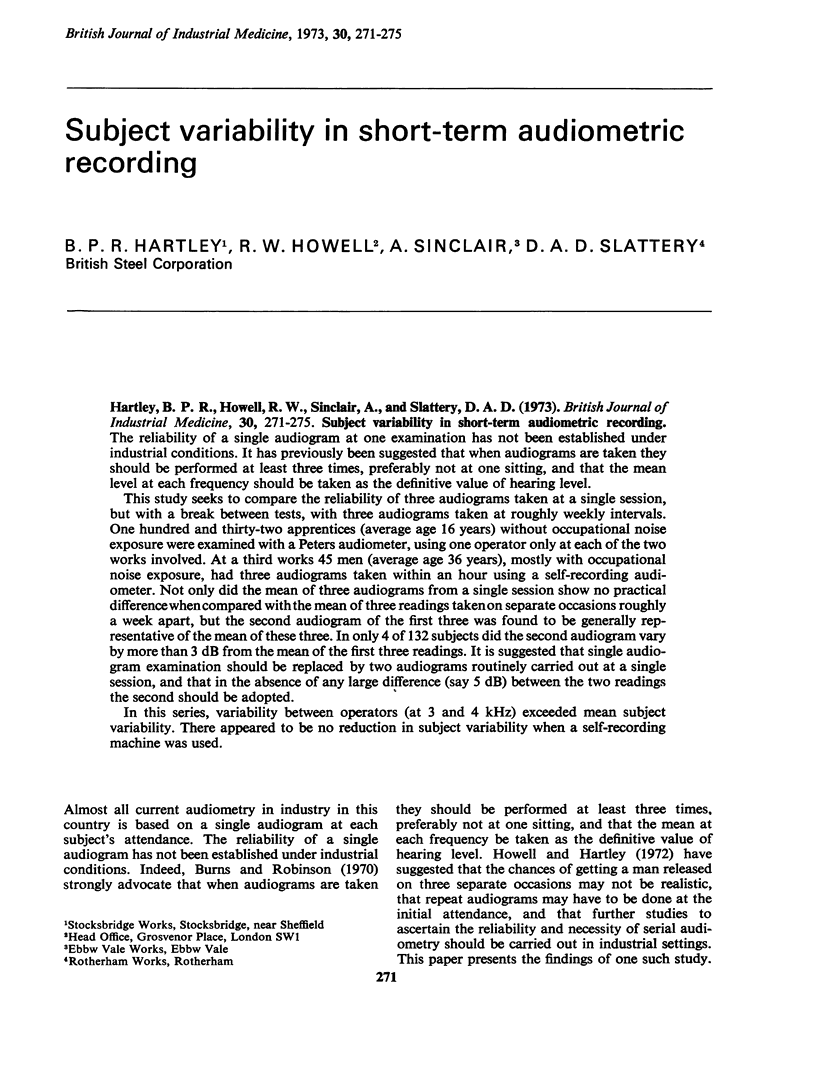
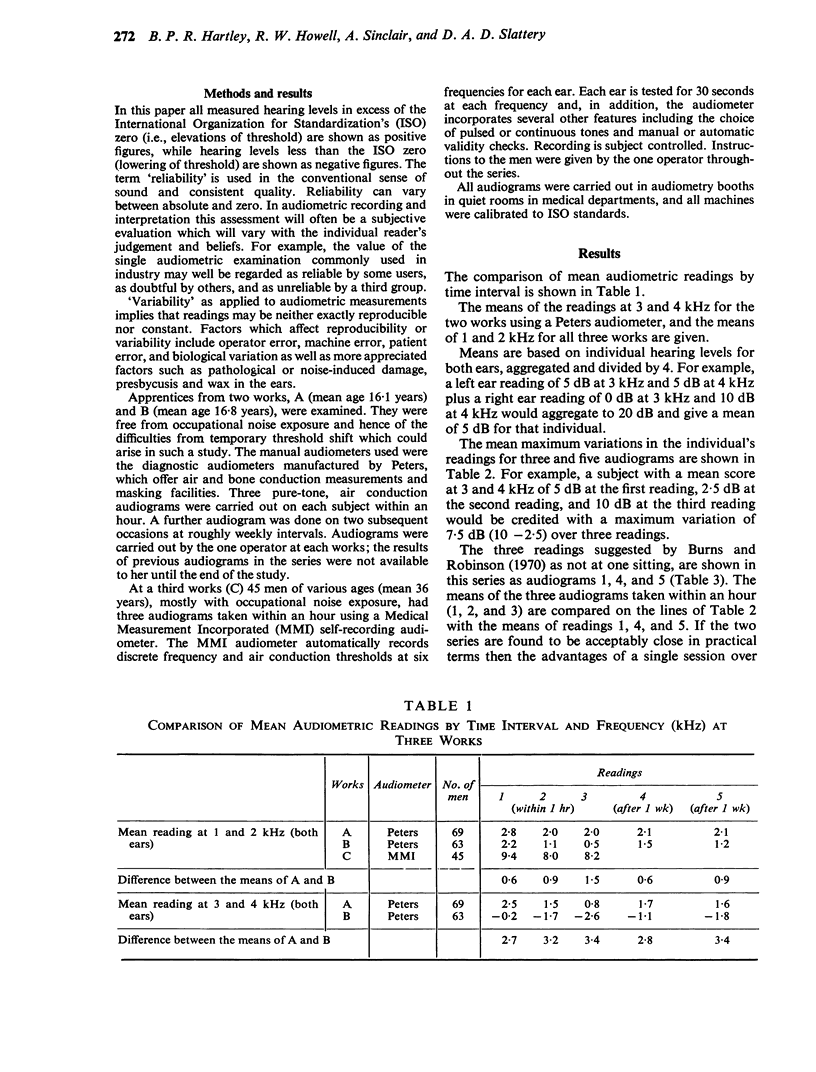
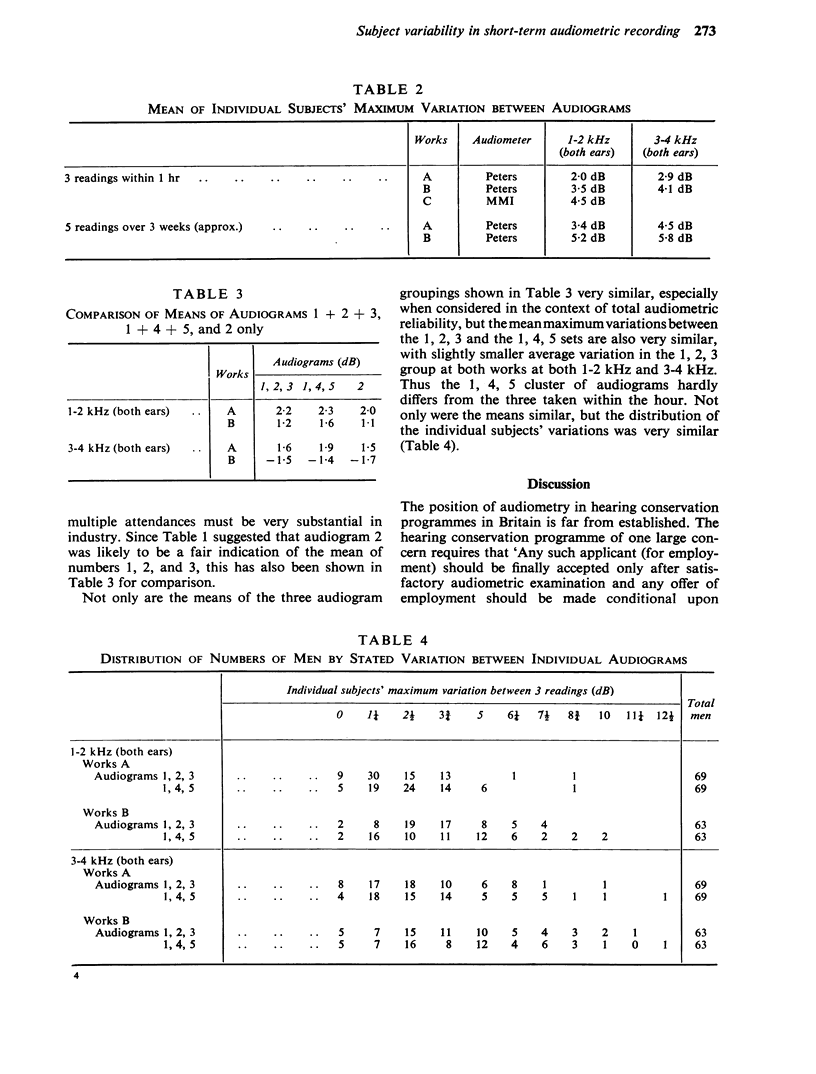
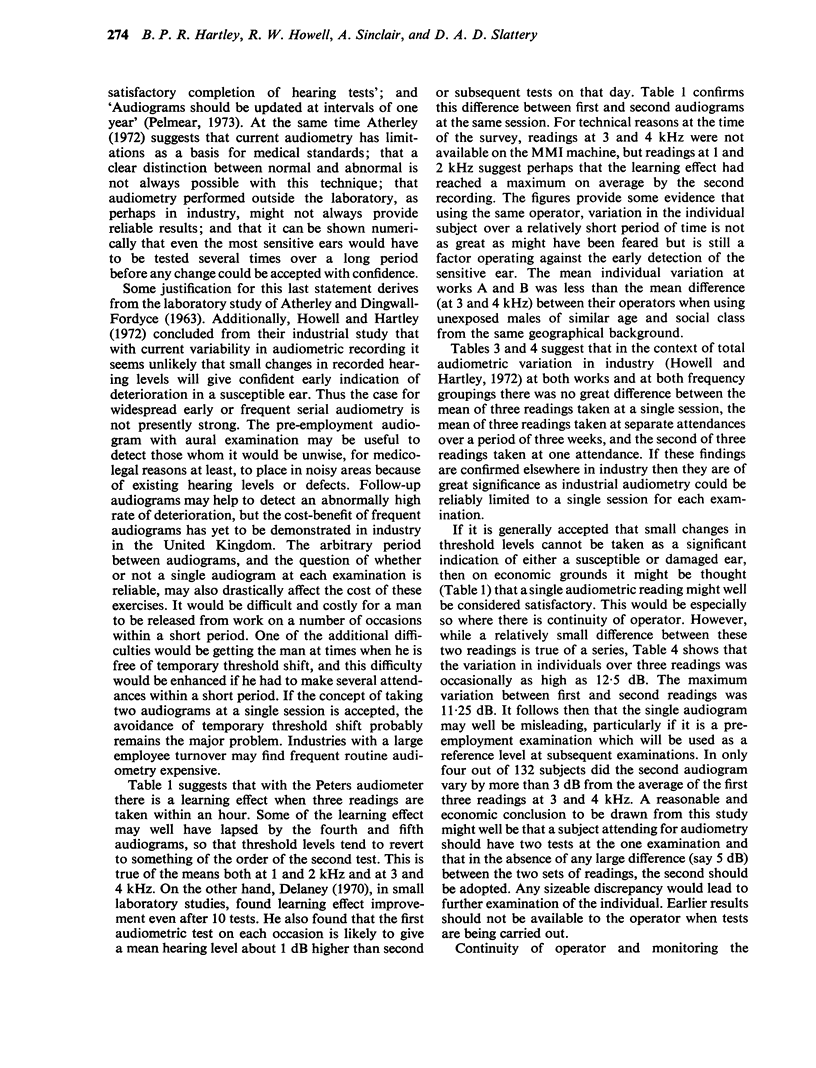
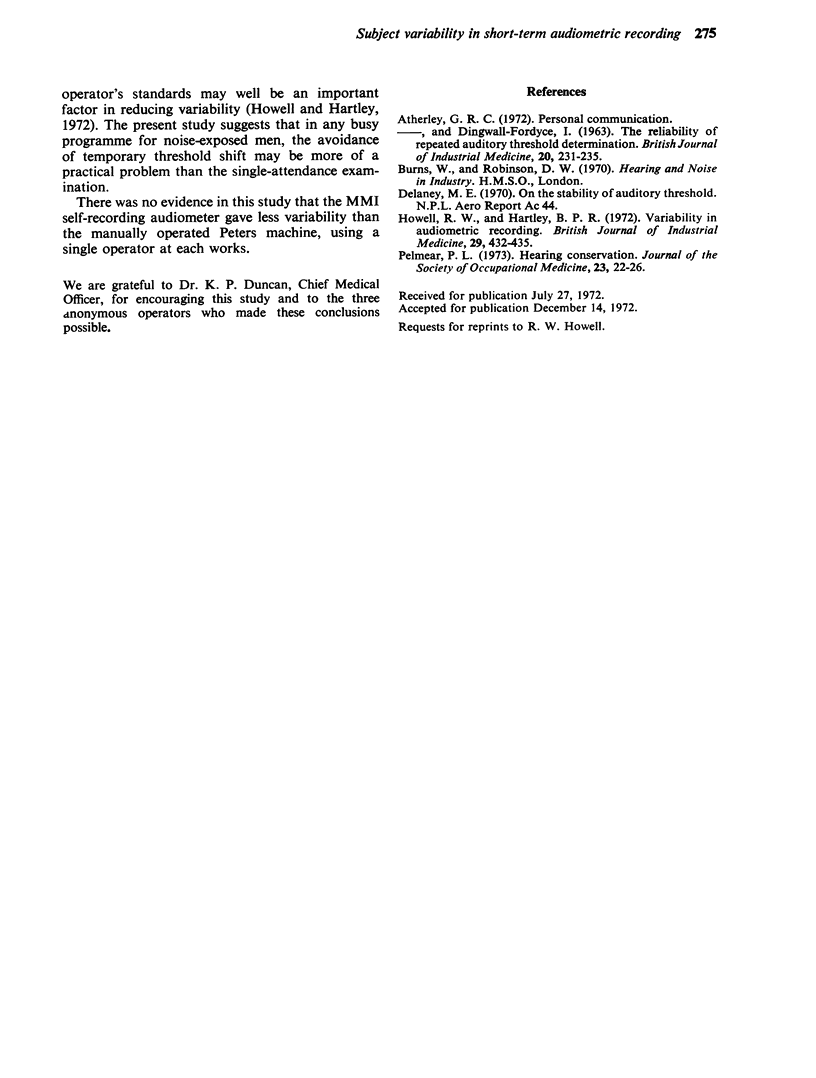
Selected References
These references are in PubMed. This may not be the complete list of references from this article.
- ATHERLEY G. R., DINGWALL-FORDYCE I. THE RELIABILITY OF REPEATED AUDITORY THRESHOLD DETERMINATION. Br J Ind Med. 1963 Jul;20:231–235. doi: 10.1136/oem.20.3.231. [DOI] [PMC free article] [PubMed] [Google Scholar]
- Howell R. W., Hartley B. P. Variability in audiometric recording. Br J Ind Med. 1972 Oct;29(4):432–435. doi: 10.1136/oem.29.4.432. [DOI] [PMC free article] [PubMed] [Google Scholar]
- Pelmear P. L. Hearing conservation. J Soc Occup Med. 1973 Jan;23(1):22–26. doi: 10.1093/occmed/23.1.22. [DOI] [PubMed] [Google Scholar]


